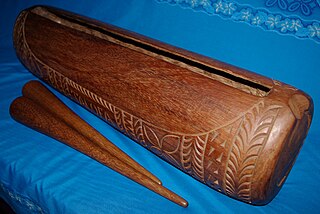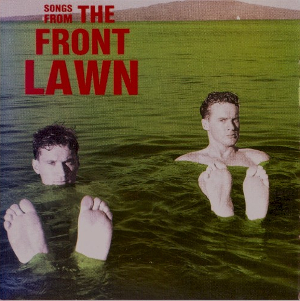
John Stanley Body was a New Zealand composer, ethnomusicologist, photographer, teacher, and arts producer. As a composer, his work comprised concert music, music theatre, electronic music, music for film and dance, and audio-visual gallery installations. A deep and long-standing interest in the music of non-Western cultures – particularly South-East Asian – influenced much of his composing work, particularly his technique of transcribing field recordings. As an organiser of musical events and projects, Body had a significant impact on the promotion of Asian music in New Zealand, as well as the promotion of New Zealand music within the country and abroad.

Beatboxing is a form of vocal percussion primarily involving the art of mimicking drum machines, using one's mouth, lips, tongue, and voice. It may also involve vocal imitation of turntablism, and other musical instruments. Beatboxing today is connected with hip-hop culture, often referred to as "the fifth element" of hip-hop, although it is not limited to hip-hop music. The term "beatboxing" is sometimes used to refer to vocal percussion in general.

The Pat Metheny Group was an American jazz band founded in 1977 by guitarist and composer Pat Metheny, along with his core collaborating member, keyboardist and composer Lyle Mays. Other long-standing members included bassist and producer Steve Rodby, from 1981 to 2010, and drummer Paul Wertico, from 1983 to 2001, after which Antonio Sanchez became the percussionist from 2002 to 2010. Vocalist Pedro Aznar was also a long-time member, performing with the group from 1984 to 1993. In addition to a core quartet, the group was often joined by a variety of other instrumentalists expanding the size to six or eight musicians.
Blam Blam Blam were a New Zealand pop/rock/alternative band. Tim Mahon (bass) and Mark Bell had been members of The Plague and The Whizz Kids. After losing their drummer Ian Gilroy to The Swingers in 1980, Tim and Mark joined up with Don McGlashan, a multi-instrumentalist who played drums and sang many lead vocals.

Don McGlashan is a New Zealand composer, singer and multi-instrumentalist who is best known for membership in the bands Blam Blam Blam, The Front Lawn, and The Mutton Birds, before going solo. He has also composed for cinema and television.
The Plague was a New Zealand theatrical punk/art rock band that was active from 1977 to 1979, and was led by Richard von Sturmer. Their most famous performance was at the Nambassa Music Festival in 1979 and they recorded four tracks for the Infectious EP. Von Sturmer went on to a career in writing and film-making and other members went on to play in bands such as The Whizz Kids, Blam Blam Blam, The Swingers, Coconut Rough and Pop Mechanix.

The music of Tokelau occurs in the atolls of Atafu, Nukunonu, and Fakaofo. It is dominated by communal choral activity in harmony, with percussive accompaniment including log drums (pate), pokihi and apa. Nukunonu is notable for traditional song and dance.

A slit drum or slit gong is a hollow percussion instrument. In spite of its often being called a drum, it is not a true drum because it lacks a drumhead, the membrane stretched across the top of a true drum. It is classed instead as an idiophone in which the entire instrument vibrates.
Te Vaka is an Oceanic music group that performs original contemporary Pacific music or "South Pacific Fusion". The group was founded in 1995 by singer and songwriter Opetaia Foaʻi in New Zealand. They have toured the world consistently since 1997 and have won a number of awards including the "Best Pacific Music Album" award from the New Zealand Music Awards for their albums Tutuki (2004) and Olatia (2007) and "Best Pacific Group" in the 2008 Pacific Music Awards According to the BBC, they are "the world's most successful band playing original contemporary Pacific music."
Chris Brown is an American composer, pianist and electronic musician, who creates music for acoustic instruments with interactive electronics, for computer networks, and for improvising ensembles. He was active early in his career as an inventor and builder of electroacoustic instruments; he has also performed widely as an improviser and pianist with groups as "Room" and the "Glenn Spearman Double Trio." In 1986 he co-founded the pioneering computer network music ensemble "The Hub". He is also known for his recorded performances of music by Henry Cowell, Luc Ferrari, and John Zorn. He has received commissions from the Berkeley Symphony, the Rova Saxophone Quartet, the Abel-Steinberg-Winant Trio, the Gerbode Foundation, the Phonos Foundation and the Creative Work Fund. His recent music includes the poly-rhythm installation "Talking Drum", the "Inventions" series for computers and interactive performers, and the radio performance "Transmissions" series, with composer Guillermo Galindo.

Uakti (WAHK-chee) was a Brazilian instrumental musical group that was composed of Marco Antônio Guimarães, Artur Andrés Ribeiro, Paulo Sérgio Santos, and Décio Ramos. Uakti was known for using custom-made instruments, built by the group itself.

"Bathe in the River" is a single released by New Zealand supergroup Mt Raskil Preservation Society featuring New Zealand soul singer Hollie Smith. It appears on the soundtrack for the 2006 New Zealand film No. 2.
Lenny Seidman is a tabla player, a composer, a co-director of the Spoken Hand Percussion Orchestra, and a World Music/Jazz curator at the Painted Bride Art Center in Philadelphia.

Geoffrey John Chapple is a New Zealand author and journalist. He conceived and founded Te Araroa, a walking track the length of New Zealand.

Philip Dadson is a New Zealand musician and artist, who was in the foundation group for the Scratch Orchestra and founder of From Scratch. He lectured at the Elam School of Fine Arts, part of the University of Auckland from 1977, leaving in 2001 to take up full-time art practice.

Jyoshna aka Jyosna, Joshna, Jyotsna, is a British born New Zealander Kirtan singer/songwriter and ethnomusicologist Her stage name comes from Sanskrit and the meaning is "moonlight".
Atoll Records is a New Zealand record label dedicated to classical, historical and contemporary music.
Ivan Zagni is a New Zealand-based musician and composer who has been a member of bands such as Jody Grind, Big Sideways and Avant Garage, and has recorded albums with Aynsley Dunbar, Elton Dean, Don McGlashan and Peter Scholes.

Songs from the Front Lawn is the debut album by the New Zealand musical/theatrical duo the Front Lawn. It was released on 9 August 1989. Jennifer Ward-Lealand contributed to the album.

The Limbs Dance Company was formed in Auckland, New Zealand in May 1977 and disbanded in Wellington in September 1989. Limbs was "the first contemporary dance company in New Zealand to win a general following", and performed alongside notable New Zealand acts such as Split Enz.













